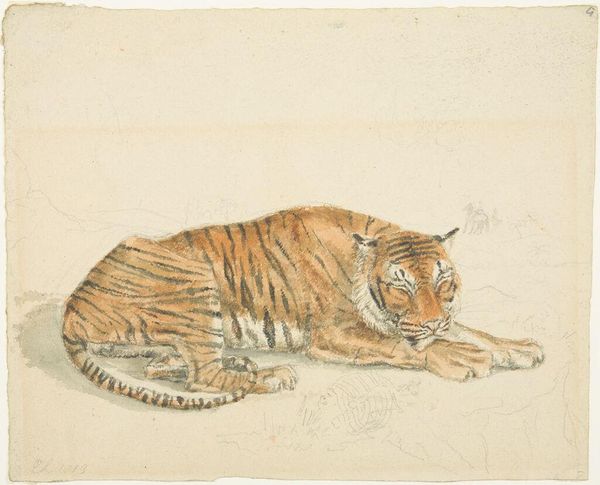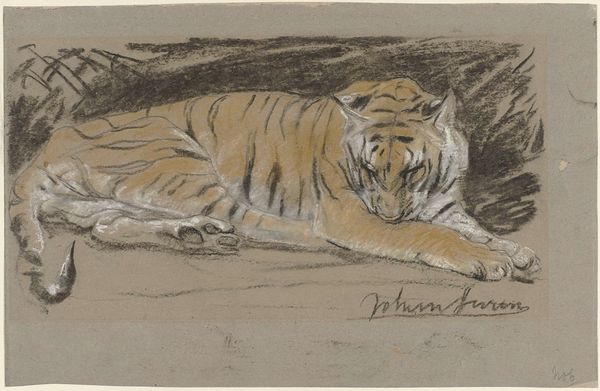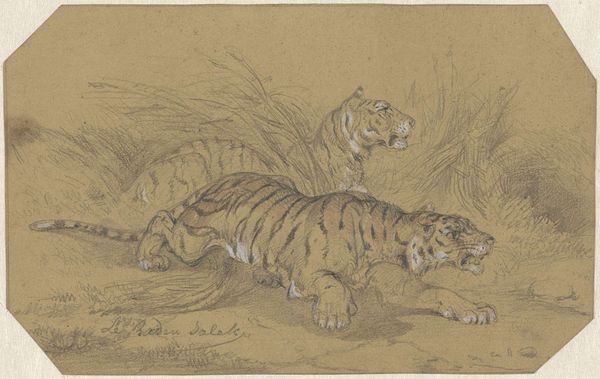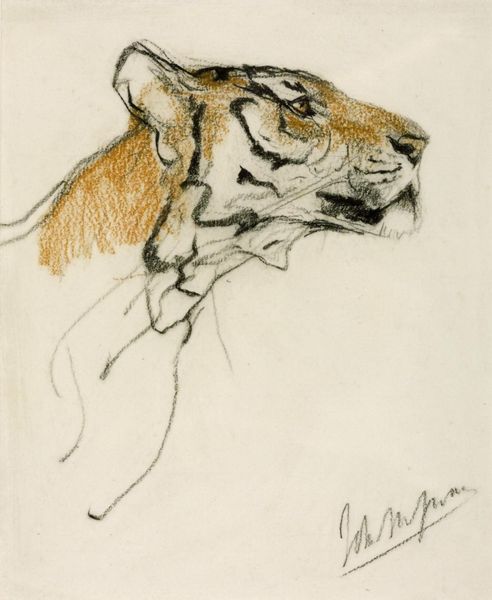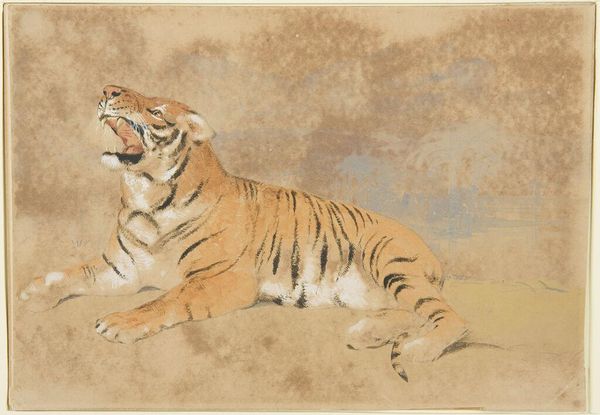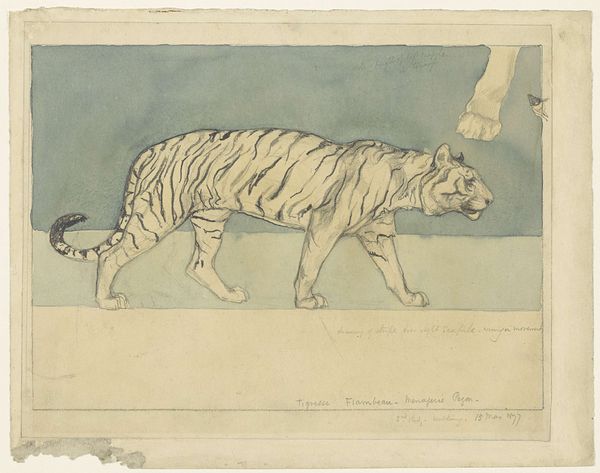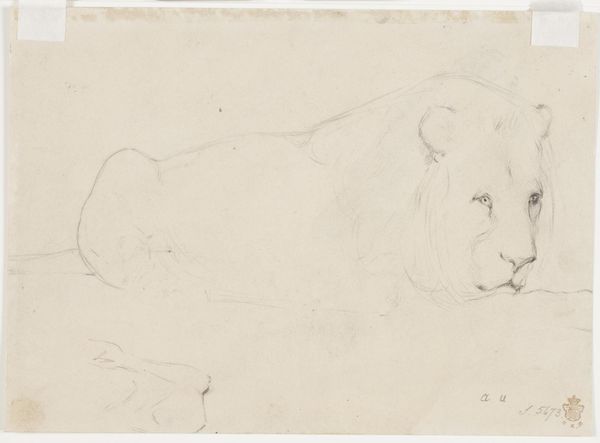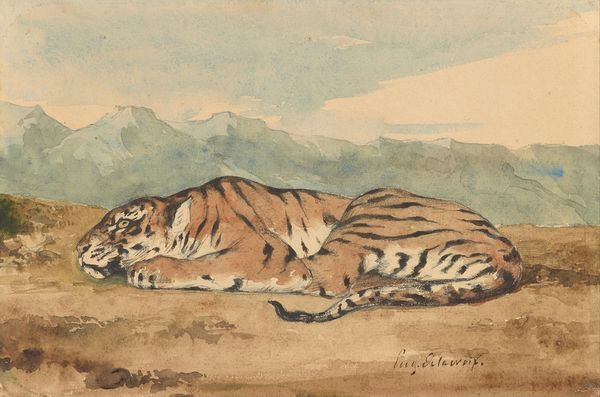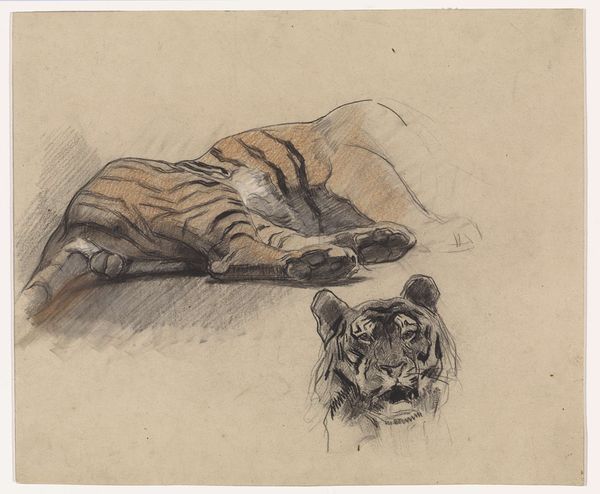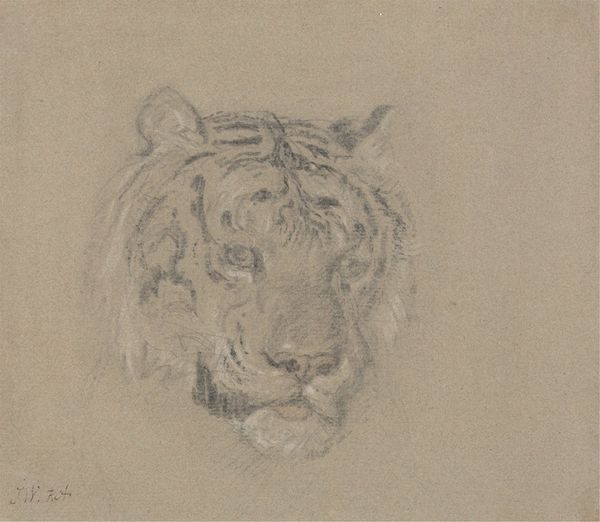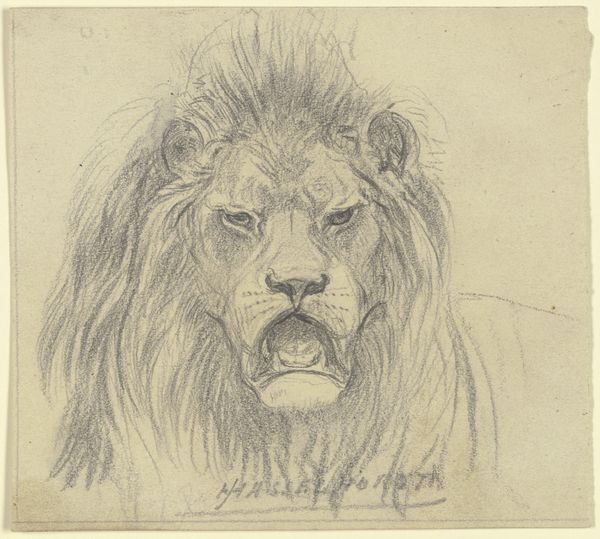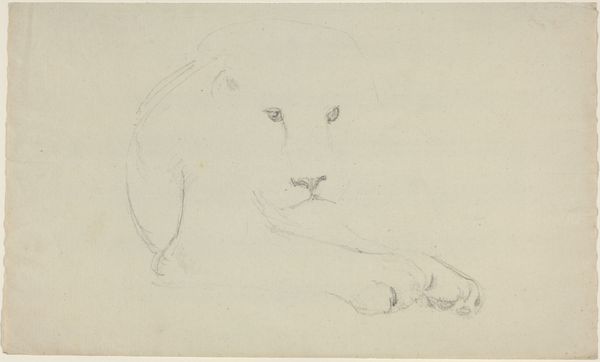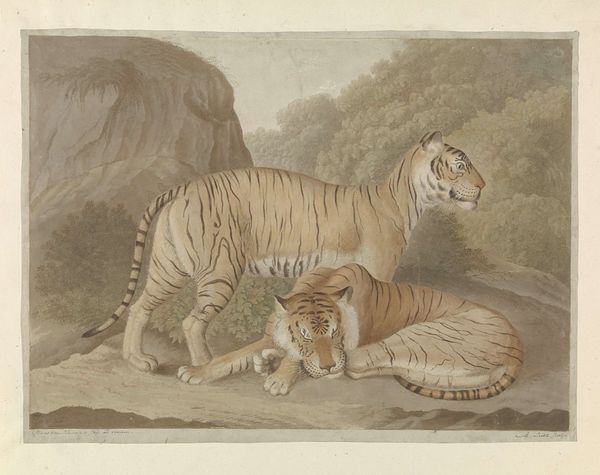
drawing, pencil
#
portrait
#
drawing
#
pencil sketch
#
asian-art
#
pencil drawing
#
pencil
#
botanical drawing
#
pencil work
#
realism
Dimensions: height 169 mm, width 216 mm
Copyright: Rijks Museum: Open Domain
Editor: This is "Head of a Tiger" by Raden Saleh, a pencil drawing from 1847 currently housed in the Rijksmuseum. There's something quite striking about it—it's so simple yet powerful. The tiger's gaze feels incredibly intense. What's your take on this piece? Curator: Well, beyond the immediate visual impact, I think it's crucial to consider the socio-political context in which Saleh created this work. He was one of the first Indonesian artists to study in Europe, and his art often explores the complex relationship between colonizer and colonized. How does the representation of the tiger—a powerful, exotic animal—speak to those dynamics, do you think? Editor: That's an interesting point! Maybe the tiger embodies the spirit and power of the Indonesian people in the face of colonialism? Curator: Exactly. It also raises questions about Orientalism and the European fascination with the "exotic" East. How might Saleh be subverting those expectations through his artistic choices? Think about the details of the sketch—the direct gaze, the confident lines. Editor: I see what you mean. He's not just presenting a docile animal for European consumption; there’s a clear assertion of power and dignity. It definitely shifts my perspective on what I initially saw as simply a 'realistic' drawing. Curator: Precisely. Art doesn’t exist in a vacuum; it’s always engaging in dialogue with its historical moment. Considering these layers makes the artwork more powerful, don’t you think? Editor: Absolutely. Thinking about it through the lens of colonialism and identity adds so much depth. I hadn't considered that before! Thank you! Curator: My pleasure. That's the beauty of art history; it challenges us to constantly question our assumptions.
Comments
No comments
Be the first to comment and join the conversation on the ultimate creative platform.
